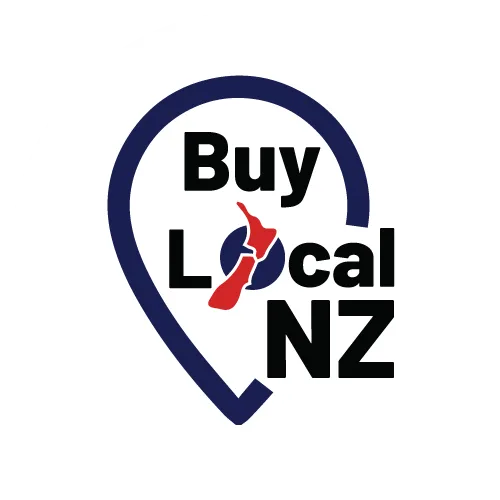
What Makes Local Business Review Automation Work?
You'll get the most out of local business review automation by combining smart timing with personal touches. Set up your system to automatically request reviews within 24-48 hours of a purchase or service, when customer experiences are still fresh. Use location-specific templates and customer data to make each request feel genuine, not robotic. Effective automation won't replace human interaction - it'll enhance it. Understanding these key components will reveal your review management success.
Understanding Review Automation Fundamentals
Review automation streamlines the process of collecting, managing, and responding to customer feedback for local businesses. This powerful system empowers you to break free from manual review management while maintaining authentic customer connections.
You'll discover how automation tools monitor multiple review platforms simultaneously, instantly alerting you to new customer feedback. These systems leverage smart triggers to send review requests at ideal times - like right after a positive interaction or purchase.
They'll help you craft personalised response templates that maintain your unique voice while saving precious time. The key is understanding that automation isn't about replacing human interaction - it's about enhancing it.
You're free to focus on meaningful customer engagement while the system handles repetitive tasks, ensuring no review goes unnoticed or unaddressed.
Key Components of an Effective Review Request System
Building an effective review request system requires several essential components working in harmony to maximise customer engagement and response rates.
You'll need a robust customer database that captures transaction timing and contact details, plus an automated trigger system that sends requests at the ideal moment after service completion.
Your system should include customisable templates that speak directly to your customers' experiences, making it easy for them to share their thoughts.
Integrate multiple review platforms like Google Business Profile, Yelp, and Facebook to give customers choices in where they post.
Don't forget to implement tracking mechanisms that monitor response rates and sentiment, allowing you to adjust your approach for better results.
A well-designed follow-up sequence can re-engage customers who haven't responded, without becoming intrusive.
Timing and Trigger Points for Review Collection
Timing plays a critical role in maximising review response rates from your customers. You'll want to strike while the experience is fresh - typically within 24-48 hours after a service or purchase. This sweet spot guarantees customers can recall specific details while still feeling the emotional impact of their experience.
Set up automated triggers that align with your customer's journey. Launch review requests after key satisfaction indicators: successful product delivery, positive customer service interactions, or repeat purchases.
For service-based businesses, trigger requests following appointment completion or project milestones.
Don't miss prime opportunities like post-purchase euphoria or successful problem resolution. These moments, when customers feel most connected to your brand, often yield authentic, detailed reviews that carry more weight with potential customers.
Personalisation Strategies in Review Automation
You'll see better engagement when you target your review requests based on customer location data and buying patterns.
Your automated messages can reflect specific store locations, regional preferences, and local events that resonate with customers in different areas.
Creating response templates that reference particular products, services, or experiences unique to each location helps maintain authenticity while saving time in your review management process.
Targeting Location-Based Messages
While traditional review automation often takes a one-size-fits-all approach, location-based message targeting allows businesses to create personalised review requests that resonate with customers in specific geographic areas.
You'll unleash powerful engagement by crafting messages that reference local landmarks, events, or cultural touchpoints unique to each neighbourhood. Mention the nearby park where your food truck operates, or the community festival where customers first discovered your boutique. This hyper-local approach builds authentic connections.
Don't limit yourself to generic templates. Instead, segment your review requests by zip code, neighbourhood, or even specific street corners. You can tailor language, timing, and context based on local demographics and behaviours.
This targeted strategy empowers you to boost response rates while building meaningful relationships with your community.
Tailored Response Templates
Creating personalised response templates is essential for maintaining genuine customer relationships at scale.
You'll want to craft responses that reflect your brand's unique voice while addressing specific customer feedback patterns. Start by developing distinct templates for positive, neutral, and negative reviews.
Break free from generic responses by incorporating dynamic fields that automatically pull in customer names, purchase details, and specific mentioned experiences.
You can empower your team by creating modular response segments they can mix and match based on review content.
Consider developing location-specific templates that reference nearby landmarks or local events to strengthen community connections.
Don't forget to update your templates regularly to keep them fresh and relevant.
Your automated responses should feel natural and spontaneous, even though they're template-based.
Monitoring and Managing Review Response Workflows
Once a review response system is in place, monitoring and managing the workflow becomes essential for maintaining consistent quality and timely responses.
You'll need to keep track of your review management process to guarantee nothing falls through the cracks and your brand's reputation stays protected.
Here's what you need to monitor in your review response workflow:
- Response time metrics - Track how quickly your team addresses new reviews and maintain target response times.
- Quality assurance checks - Regularly assess if responses align with your brand voice and communication guidelines.
- Team performance tracking - Monitor who's handling which reviews and evaluate individual response effectiveness.
- Automation efficiency - Measure the success rate of your automated responses and identify areas needing human intervention.
Measuring Success and ROI of Automated Reviews
To maximise the value of your review automation system, you'll need clear metrics and analytics to measure its effectiveness and return on investment.
Track key performance indicators like response time, review volume growth, sentiment trends, and customer satisfaction scores.
Calculate your ROI by comparing the cost of your automation system against tangible benefits like increased customer retention, higher average ratings, and time saved by your staff.
Don't forget to measure the impact on your online visibility and search rankings.
Break free from manual tracking by setting up automated reporting dashboards that monitor your review performance across all platforms.
Focus on metrics that directly impact your bottom line, such as conversion rates from review readers to customers and the correlation between improved ratings and revenue growth.
FAQs
Can Negative Reviews Be Filtered Out Using Automation Tools?
While you can't ethically filter out negative reviews through automation, you're able to manage your online reputation by responding quickly and proactively addressing customer concerns using automated monitoring tools.
How Long Should Businesses Wait Before Sending Follow-Up Review Requests?
You'll want to send follow-up review requests within 24-48 hours while the experience is fresh. Don't wait longer than a week, or you'll risk losing your customer's authentic feedback.
Which Review Platforms Integrate Best With Automated Review Collection Systems?
You'll find Google Business Profile, Facebook, and Trustpilot offer the strongest API integrations for automated review collection, while Yelp's restrictions make it less compatible with most systems.
Do Automated Review Requests Affect the Authenticity of Customer Feedback?
While you might worry about authenticity, automated review requests don't manipulate feedback - they simply make it easier for real customers to share their honest opinions on their own terms.
What Legal Considerations Should Businesses Know About Automated Review Collection?
You'll need to comply with FTC disclosure requirements, guarantee GDPR data protection compliance, obtain clear customer consent, and never incentivise reviews or suppress negative feedback to avoid legal penalties.
In Summary
You'll find that review automation success comes down to timing, personalisation, and consistent follow-through. Like a well-oiled steam engine in the digital age, your automated review system should run smoothly while maintaining a human touch. By focusing on these fundamentals and regularly measuring your results, you're setting your business up for a steady stream of authentic customer feedback that drives growth.

